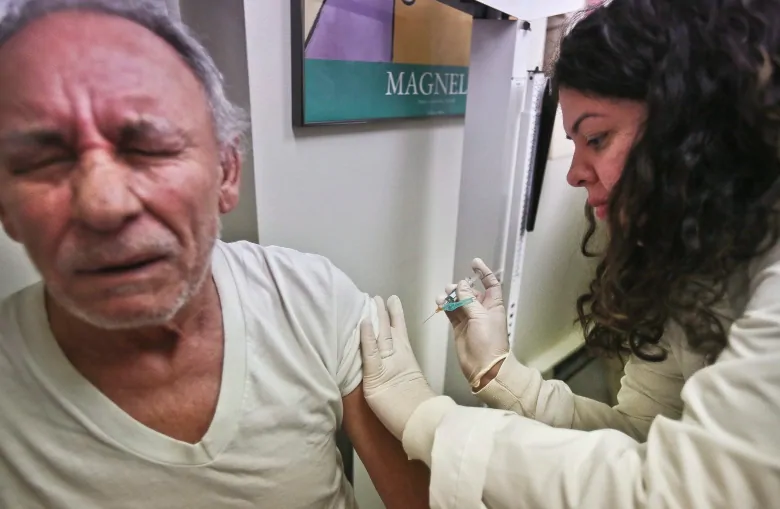As countries compete ferociously for resources to fend off the COVID-19 pandemic, the government of Canada may want to start planning ahead for another viral wave set to sweep over the planet: the annual influenza epidemic.

As countries compete ferociously for resources to fend off the COVID-19 pandemic, the government of Canada may want to start planning ahead for the next viral wave set to sweep over the planet: the annual influenza season.
Virologists and infectious disease specialists say the selection of this year’s flu vaccine — always something of a hit-and-miss undertaking — will be critical to reducing the impact of a second wave of COVID-19 that the U.S. Centers for Disease Control (CDC) has warned could be worse than the first because it will coincide with the the annual arrival of the flu.
“There’s a possibility that the assault of the virus on our nation next winter will actually be even more difficult than the one we just went through,” CDC director Robert Redfield warned this week.
The success of this year’s flu vaccination campaign will be critical to Canada’s ability to control the novel coronavirus for three reasons: hospital capacity, comorbidity (having both diseases at once, which could compound their effects) and the limited supply of COVID test kits.
The need to plan ahead
CBC News asked Health Canada what it’s doing this year to ensure it isn’t caught short if there is a global scramble similar to the one we are seeing now as countries compete for scarce medical supplies during the next wave of flu.
CBC also asked if the government of Canada intends to mount a more aggressive vaccination campaign than usual.
“The Public Health Agency of Canada is planning ahead for the potential for simultaneous outbreaks of the flu and COVID-19 infections in Canada this fall,” spokesman Geoffroy Legault-Thivierge told CBC News.
“To help minimize challenges this may cause to the health care system, the 2020 flu campaign will put a special emphasis on at-risk populations such as seniors and people with compromised immune systems or with underlying medical conditions.”

Typically, the stated goal of the annual vaccination drive is to reach an 80 per cent vaccination rate in vulnerable populations, such as those over 65. In the past three years, that rate has fluctuated between about 65 per cent and 71 per cent.
But the vaccination rate for 18 to 64-year-olds is much lower. Usually, only about a quarter of people in that population group bother to get a flu shot. Even among those with chronic medical conditions, fewer than half get vaccinated.
‘Double whammy’
Flu season is usually the time of year when Canadian hospitals are at their busiest

